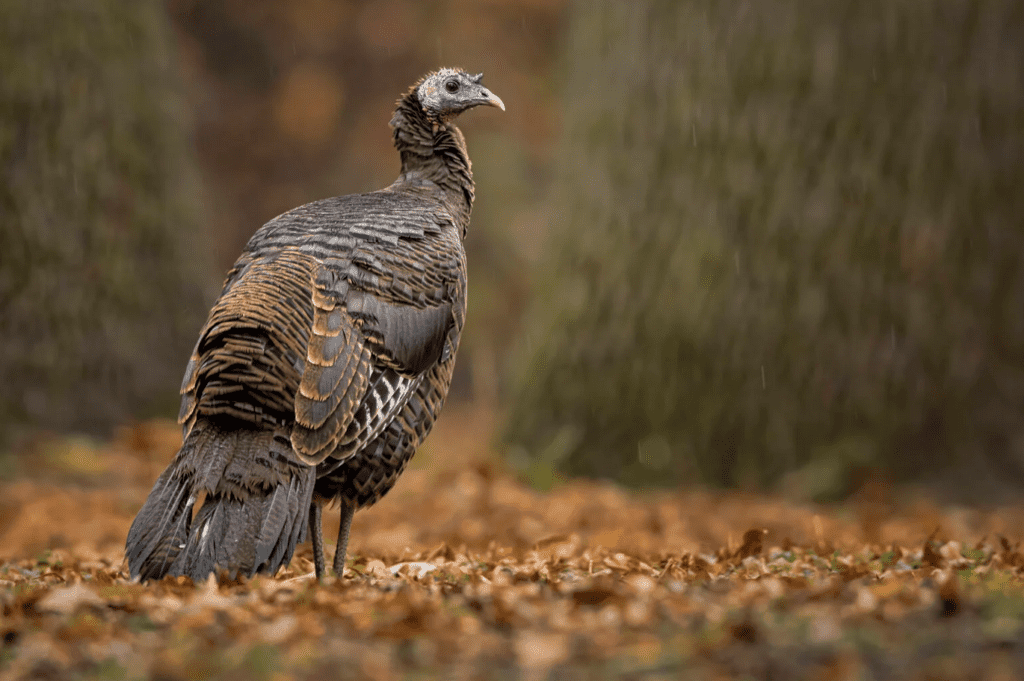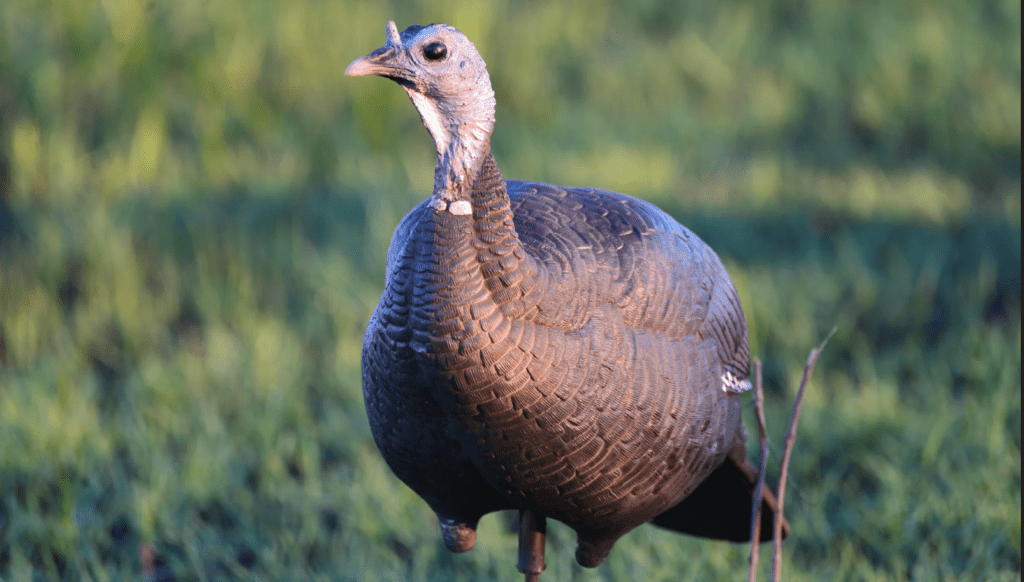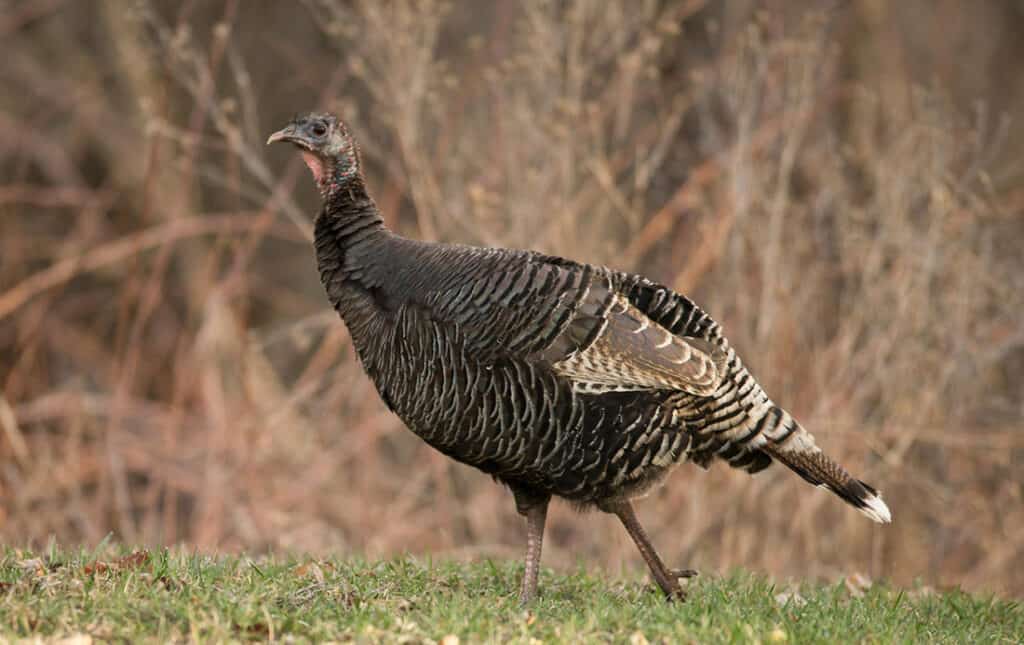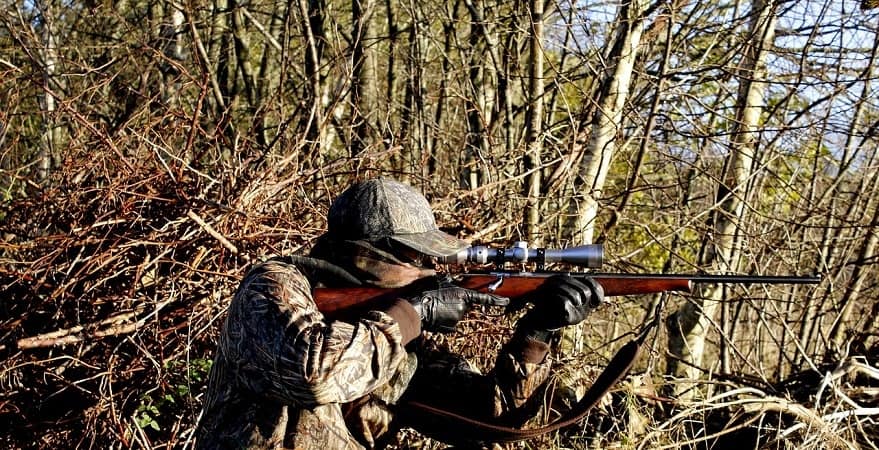Fall is one of the best times of the year to hunt turkeys. Most other hunters are busy chasing deer, ducks, or fish which means the turkey woods will be a lot less crowded than during the spring. This is good news for you! That said, fall turkeys are a different animal than spring turkeys. The tactics you need to use are different than in the spring.
Fall turkeys can be hunted using many different techniques, including using turkey decoys. Decoys can be effective in the fall but they need to be used in areas with high turkey activity. You need to match the sex of the turkey you are hoping to harvest.
Turkey hunting in the fall can be extremely exciting. In some cases, it’s even more exciting than in the spring. In most states that offer fall turkey hunting, you can harvest male and female turkeys. The jakes are bigger in the fall and more closely resemble a tom in the spring while the hens are much more gregarious and talkative.
If fall turkey hunting sounds interesting to you, keep reading to learn more. I’ll explain how to hunt using decoys, how to bring turkeys in, fall turkey hunting opportunities, and additional safety concerns for fall hunts.

Why You’ll Want to Use Turkey Decoys in the Fall
In the fall, turkey decoys are best used to pique the interest of nearby birds. Unless you break up a flock, it is very difficult to call a bird in during the fall. We will discuss breaking up a flock later on. There are three general reasons to use turkey decoys in the fall.
Pique Their Interest
When using decoys to pique a turkey’s interest, the goal is to make the bird curious enough to come a little bit closer into range. This tactic is best used if you can get close enough to the birds so that they can see the decoy. It is also a good option if you are hunting in an area that you know the birds frequently use.
Create Competition
Turkeys are competitive creatures. Sometimes they won’t tolerate a bird that isn’t from their flock using a food source they have consistently fed on. Sometimes they will come in to kick the other bird out. You can use this to your advantage by setting up a highly visible decoy on a food source.
Distract Turkeys for the Shot
One of the best reasons to use turkey decoys in the fall is to distract the birds when they are within range. Turkeys have very keen eyesight and will detect even the slightest motion or anything else out of place. Turkeys are extremely wary birds and that characteristic makes them hard to harvest. If a turkey is distracted, it’s much easier to make a move like drawing a bow.
Did You Know I Had a Newsletter?! 📬
I do! I send out a weekly email that talks all about deer hunting and is a bit more personal than a regular article. If you sign up right now, I will even send you the first chapter of my Ebook “The Hunters Guide to Scent Control” for free! What is there to lose? 🙂
Which Types of Decoys Should You Use?
Fall turkeys don’t act like spring turkeys. This is a crucial point to understand. Even though the birds can be talkative in the fall, and this includes gobbling, they aren’t likely to come running in gobbling and certainly aren’t interested in breeding. This means that the types of decoys you should use are different in the fall than in the spring.
Male or Female Decoys?
In general, during the fall turkeys are grouped by sex, but sometimes jakes will be grouped with the hens. Additionally, male turkeys may be separated by age class, jakes, and toms. This is important to know when using decoys in the fall. Before you set up decoys you should know the sex of the flock you are targeting. Then you should match your decoys to the sex of the birds you are after.
That said, if you are after any male turkey, then you should use jake decoys and not tom decoys. Male turkeys are more likely to spook from a tom decoy than a jake decoy. It’s also worth mentioning that hen decoys should be in a natural posture for the fall. Don’t use a hen decoy in a breeding position. Stick to decoys in an upright standing posture or a feeding posture.
Best Turkey Decoys for Fall Turkey Hunting
There’s a lot of turkey decoys on the market and it can be difficult to choose which ones will work best. When searching for a new turkey decoy you should buy the most realistic decoy you can afford. You should also consider what time of year you will be using them.

If you plan to use the decoys in the spring then go ahead and buy and use that strutting tom with a colorful head. But, if you want to use the decoys in the fall, stick to a realistic hen decoy or a jake decoy depending on the flock you are hunting. It’s a good idea to have a decoy of each sex with you so you can adjust your tactics based on what you are seeing that day.
The Flextone Thunder Chick Upright Decoy is perfect for resembling a mature hen in the fall, and you can get it for a good price on Sportsman’s Warehouse’s website.
You can also add a Flextone Thunder Chick Feeder Decoy for a more relaxed appearance. The hen decoys just might make a flock of hens come over because they are curious or even make them territorial.
The Flextone Thunder Jake Decoy is perfect for hunting a flock of toms or jakes. This decoy is easy to see because of its upright posture and it doesn’t look aggressive. Set this decoy up if you are hot on the trail of a flock of toms and jakes.
Setting up for the Perfect Fall Turkey Hunt
For the past few years or so I’ve hunted turkeys off and on in the fall. I’m not sure why I don’t make more time to do it. In many ways, it’s easier to harvest birds in the fall than in the spring, but the setups can be a bit different.
The Food Source and Transition Area Set Up
In the fall, you should focus on setting up decoys in areas where turkeys are already frequenting, like food sources or in transition areas that the birds use to get between roost sites and food sources.
When setting up on a food source or in a transition area, it’s a good idea to place the decoy so when the turkeys are coming in, they won’t be looking in your direction. For example, if the turkeys are roosting to the north and typically move to the south to feed, you should set up on the east or west side of the decoy. This is also important for safety reasons which we will talk about more later on. Place the decoy around 15 yards away from you.
Setting up the decoy 15 yards away ensures that even if the turkeys don’t come to the decoy, they will still likely be in range. You should also make sure that you are well camouflaged and keep movement to an absolute minimum.
The Breakup
It can be very difficult to call birds in without breaking up the flock. If you want to call in a bird in the fall, this is your best bet! The goal of breaking up a flock of turkeys is simple: scatter the birds in the flock in different directions and as widely as possible. You want the birds to lose each other. This can be accomplished by flushing the flock yourself.
In some states, it’s also legal to use dogs. Dogs are much faster than people and you will have a lot better chance of the birds scattering properly. Remember to check your local hunting regulations before doing this to make sure it is legal in your state.
After breaking up the birds move 50 to 100 yards from where the birds flushed. Then set up your decoy (remember to match the sex of the flock), wait about 15 minutes or until you hear a turkey call, and start calling. Sometimes the birds will respond to you while other times they will sneak in.

The Call In
If you are calling scattered turkeys you will have a much better chance of bringing them in. In this scenario, it’s best to match the calls of the birds. They will often be vocal once they are sure the threat is gone. I typically just match what I hear the birds doing. If they are quiet I make soft yelps and putts. Patience is key here.
Another tip is to use multiple types of calls to make it sound like there are already several birds that have grouped back up together. I like using the HS Strut Double D diaphragm call and either a box call or a slate call. Sometimes I will even use all three by rotating between the box and slate call. Each call will sound like a different bird.
If you are calling in a transition area or feeding area, it’s a good idea to try to sound like a content bird or flock of birds. I typically start by using soft yelps, putts, and purrs. If the birds aren’t responding or going in a different direction I take it up a notch. I will use multiple calls and get more aggressive. If a boss hen starts responding then I like to get aggressive and try to pick a fight with her by copying what she is doing but doing it slightly more aggressively.
Fall Turkey Hunting Opportunities
Nearly every state has a fall turkey hunting season. Only 8 don’t, and 1 of the 8 states is Alaska which doesn’t even have a huntable turkey population. This means that there’s a very good chance that you can legally hunt turkeys in the fall where you live. This is great news because fall turkey hunting can be a blast.
Further, most states allow either sex of turkey to be harvested in the fall, whereas in the spring typically only males are allowed to be harvested. Turkeys are gregarious birds in the fall. It isn’t unusual to find a flock of 15 to 20 birds or even more. Where legal it’s a great idea to purchase more than one tag. Once you get close to a flock it’s a real possibility to shoot multiple birds.
If you want to learn about the turkey hunting opportunities in each state, check out this great article by the National Wild Turkey Foundation.
Fall Turkey Hunting Safety
As with all hunting, safety should always be considered. In most states, blaze orange is not required for fall turkey hunting but rules differ by state. Sometimes there are circumstances when orange is required for fall turkey hunters. For example, in some states, orange is required for fall turkey hunters during big game firearm seasons.
Regardless of hunter orange requirements, you should always keep safety in mind. Personally, even when orange is not required I always have orange with me while hunting. You never know what idiot can be in your woods, and Hunters Ed did NOT stick for everyone…
When using decoys, you should be extra aware of other hunters in your area. This is even more important when using decoys in a state like Colorado, which allows fall turkey hunting with a rifle. If you are unsure if your state allows rifle hunting for fall turkeys then take a look at this table I made. It’s also always a good idea to contact your local fish and game department when you are unsure of the law.
If you want to know a bit more about turkey hunting with a rifle, I wrote an entire article about it that you can read here.

When setting the decoys up, make sure if another hunter thinks they are real and takes a shot, it won’t hit you. A good example of this is setting decoys up on the edge of a field that is too big for another hunter to shoot across.
Another example would be setting up the decoys at a lower elevation; you are looking down over the decoys and will be able to easily see somebody coming and be out of the line of fire. You should never sit in line behind your decoys with the most likely approach that a hunter will use.
If you are concerned about the safety of using decoys, especially in a state that allows rifle hunting for turkeys, then perhaps you shouldn’t use them at all. Your safety should come first, especially when you are not on well policed private land.
Parting Yelp
Turkey hunting is a fantastic activity for the fall. Limits are generally higher than in the spring. Often you can harvest either sex of a bird, the turkeys are in large flocks, and they are focused on food. They are also relatively easy to pattern and scout because they make a racket in the morning on the roost and tear up the forest floor where they are spending a lot of time.
You will want to use the decoy that matches the bird you are after, and we covered a fair amount of strategies on how to place and use those decoys. If you aren’t chasing deer or ducks in the fall, you should be chasing turkeys! This guide is a good place to start, so get out there and bag a fall turkey!
Sister Post | Wild Turkey Calls & Sounds, Plus Audio
A sister post is another post that I have written that follows along with the same topic as the one you just read. After reading this article, you will probably like this next one even more! Here is a little teaser…
Wild turkeys make many different calls and sounds, and each one can mean something different. Some hunters have become turkey calling pros by using these simple sounds. To be a good turkey caller you need to understand the meaning behind the call….Keep Reading
Yelp
The yelp is the most basic turkey call you will hear. The yelp generally consists of shorter single notes normally strung together in a series…Keep Reading
Kee Kee Run
This call is typically made by a young turkey when it…Keep Reading
Thank you for reading my article! I hope you enjoyed it, and if you have any questions or feedback, please send me an email at [email protected]. If you want to learn more about me or Omega Outdoors, visit my About Page. Otherwise, I hope you have a great day, and check out some of my other articles while you’re here!

